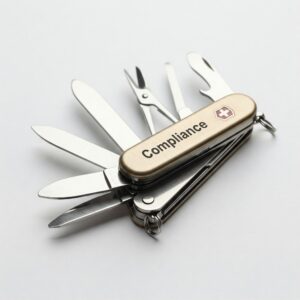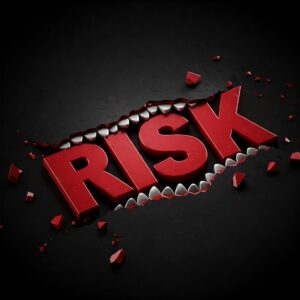Managing risk is a cornerstone of success in the financial industry. Whether it’s combating fraud, ensuring compliance, or safeguarding customer trust, effective risk management starts with understanding potential vulnerabilities. This is where risk assessment tools come into play. Let’s explore what they are, how they help, and how you can leverage them in the financial sector.
What Are Risk Assessment Tools?
Risk assessment tools are software applications or frameworks designed to identify, evaluate, and prioritize risks. These tools analyze various data points to provide insights into potential threats, helping organizations make informed decisions and mitigate risks effectively.
In the context of the financial industry, these tools can specialize in areas such as:
- Financial Crime Risk Assessment Tools: Identifying money laundering, fraud, or other illicit activities.
- Financial Risk Assessment Tools: Evaluating market, credit, or operational risks.
- Risk Assessment Tools for Fintech: Assessing risks unique to digital platforms, such as cybersecurity threats or algorithmic trading vulnerabilities.
How Do Risk Assessment Tools Help?
Risk assessment tools offer numerous benefits for financial institutions and fintech companies. Here’s how they can help:
- Proactive Risk Identification:
-
- Detect vulnerabilities before they escalate into significant issues.
-
- Identify high-risk customers, transactions, or geographies.
- Regulatory Compliance:
-
- Ensure adherence to regulations like AML (Anti-Money Laundering) and GDPR (General Data Protection Regulation).
-
- Streamline audits by maintaining detailed records of risk evaluations.
- Resource Optimization:
-
- Focus efforts and resources on the most critical areas of risk.
- Improved Decision-Making:
-
- Provide actionable insights through data-driven analyses.
- Scalability and Efficiency:
-
- Automate repetitive tasks, reducing manual errors and saving time.
What Can Risk Assessment Tools Do?
Modern risk assessment tools come with robust capabilities, such as:
- Data Aggregation and Analysis:
-
- Collect and process data from multiple sources, such as transaction records, customer profiles, and market trends.
- Risk Scoring and Categorization:
-
- Assign scores or labels (e.g., low, medium, high) based on predefined risk parameters.
- Scenario Modeling:
-
- Simulate “what-if” scenarios to understand potential outcomes of various decisions or external events.
- Real-Time Monitoring:
-
- Track activities and flag unusual behaviors instantly, enabling timely interventions.
- Compliance Reporting:
-
- Generate reports to meet regulatory requirements and demonstrate due diligence.
- Customization:
-
- Tailor risk models and parameters to align with specific business needs or regulatory frameworks.
How Can You Use Risk Assessment Tools in Financial Services?
To maximize the value of risk assessment tools in the financial industry, consider the following steps:
- Identify Your Risk Priorities:
-
- Define the key risks your organization faces, whether they’re financial crimes, credit defaults, or cybersecurity threats.
- Choose the Right Tool:
-
- Select a tool that aligns with your needs, such as a financial crime risk assessment tool for AML or a broader solution for enterprise risk management.
- Integrate with Existing Systems:
-
- Ensure the tool can connect with your transaction monitoring, CRM, or data management systems.
- Train Your Team:
-
- Equip your staff with the knowledge to interpret and act on insights generated by the tool.
- Leverage Data Sources:
-
- Use both internal and external data, such as transaction histories, market reports, and watchlists, for a comprehensive analysis.
- Review and Refine Regularly:
-
- Continuously update risk models to reflect changing regulations, business priorities, or market conditions.
Examples of Risk Assessment Tools in the Financial Industry
- SAS Anti-Money Laundering: Focused on detecting financial crimes and ensuring AML compliance.
- Refinitiv World-Check Risk Intelligence: A tool for identifying high-risk individuals and entities.
- FICO Enterprise Risk Manager: Tailored for assessing credit, operational, and market risks.
- LexisNexis Risk Solutions: Combines data analytics with compliance tools for risk assessment.
Conclusion
Risk assessment tools are indispensable for financial institutions aiming to manage risks effectively while ensuring compliance. Whether you’re combatting financial crime, evaluating credit risk, or safeguarding digital platforms, these tools provide the insights and efficiency needed to stay ahead in a competitive industry. By choosing the right tool and integrating it into your workflows, you can build a more resilient and informed approach to risk management.







